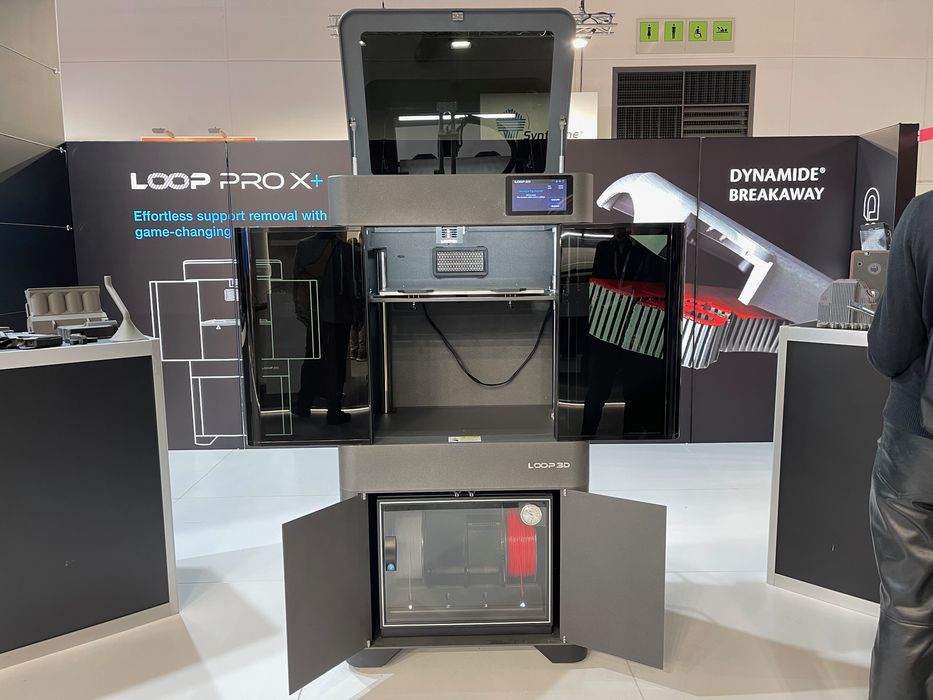
We had a look at Loop3D’s latest 3D professional 3D printer, the LOOP PRO X+.
We’ve been following the Turkish company for several years, and every time we encounter them their equipment is increasingly more sophisticated. This time was no different.
The PRO X+ FFF 3D printer has a large build volume of 500 x 350 x 500 mm, and it’s designed to produce very high quality parts.
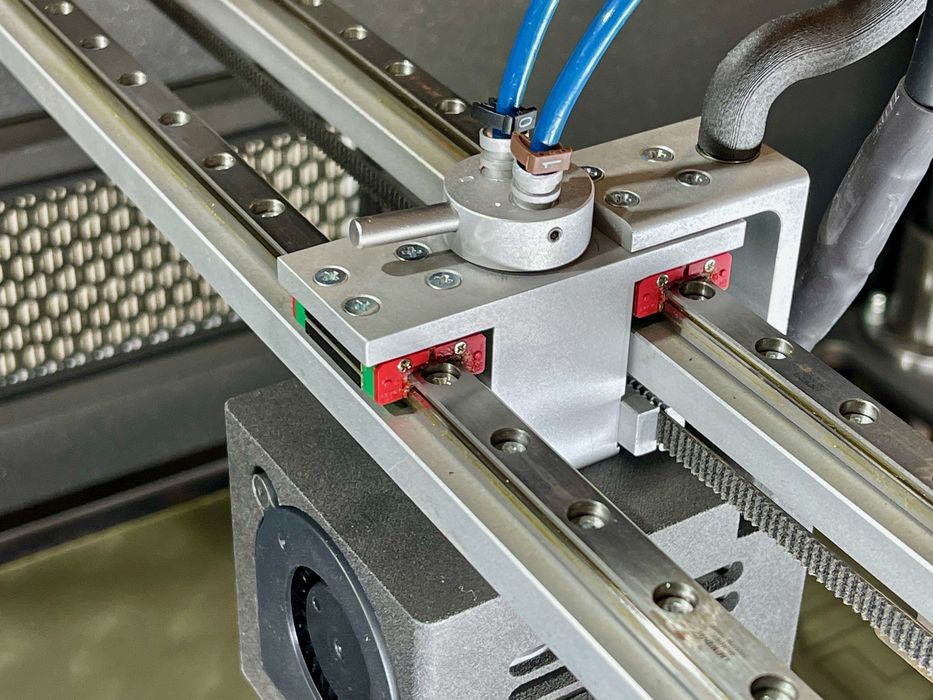
The system uses an unusual H-Bot mechatronic design, unlike the cartesian, CoreXY or delta systems used on other devices. The frame is mace from CNC milled aluminum, making it quite rigid.
It’s a multifilament machine, but one with a difference from other concepts. The four input filaments share a single nozzle, an approach commonly used. However, this requires frequent purging to ensure the nozzle has only the required material present.
In most systems there is a “purge block”, a sometimes huge chunk of material that is printed along with the model, used to purge material.
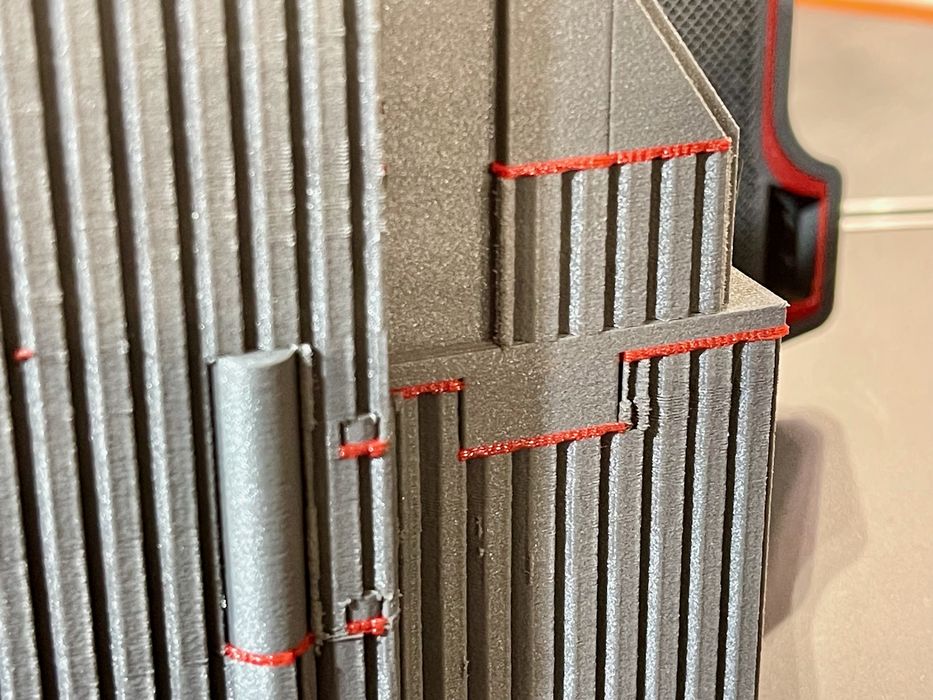
However, on the PRO X+ there is a disposal hole. Purging is done through the hole into a collection bin, leaving the prints in good order. There is no need for a prime tower.
There is a lower accessory housing up to four spools of filament. The idea is to have two for the model material, and two for the support material. When one runs out, it automatically switches to the other. The operator can then swap the empty spool without having to stop the machine. This means that the PRO X+ is really a production machine that can run continuously.
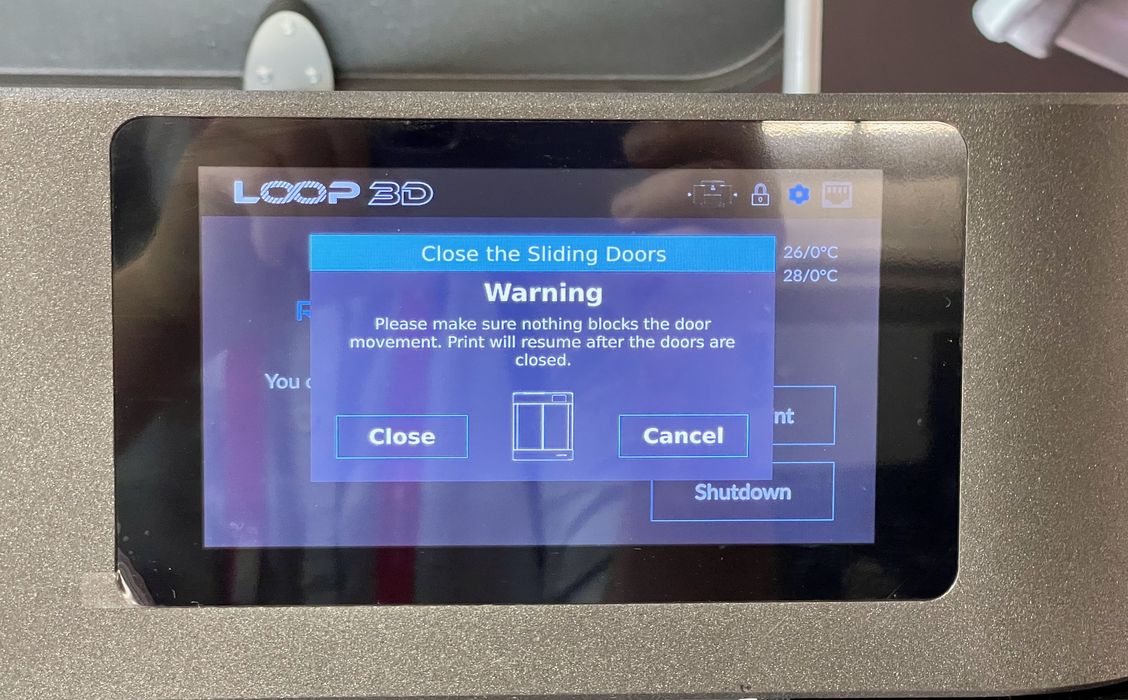
One fascinating feature on the PRO X+ that I have not seen on other equipment is automated sliding doors. Most doors on 3D printers are simple panels on hinges. But here there are motors to automatically open the doors when required. The doors also automatically lock during print jobs for safety.
The system uses breakaway support instead of the more popular soluble support options, and I asked why. Loop3D representatives told me that soluble support doesn’t really work with nylon materials, a common filament used on the PRO X+. The nylon absorbs moisture and compromises the part. Instead, the breakaway support simply pulls off easily. However, this could be challenging for some complex 3D model geometries. They did tell us that soluble support material is possible if required.
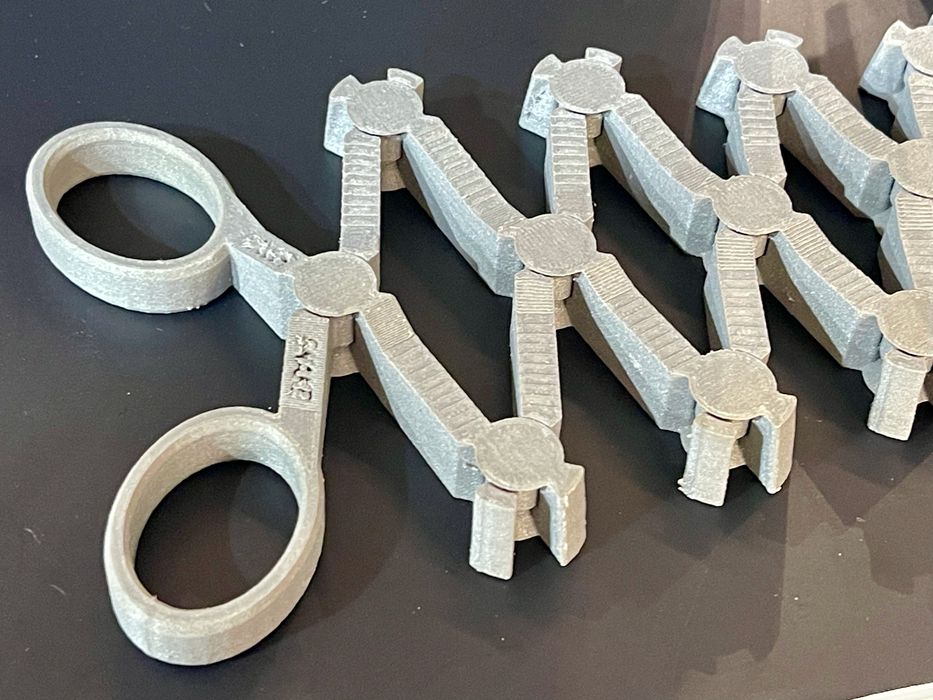
How good is the system? We saw several very high quality (and rather large) 3D prints, including this scissor demonstration part. This item snugly extends out quite far when engaged, but it does so perfectly smoothly. The tolerances on this print were simply amazing and would be challenging to produce on most 3D printers.
The PRO X+ is able to handle a wide variety of materials, including the company’s own line of DYNAMIDE materials. In that line are CF and glass reinforced PA6 options, as well as ASA. The materials are kept at less than 20% relative humidity on board the system.
A cloud system is able to provide remote management of the system, including live video views through the build chamber webcam.
The PRO X+ looks to be a good machine for low volume production of engineering-grade parts. We’re told the price of the system is €29,000 (US$31,700).
Via Loop 3D
